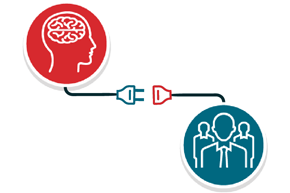
Significant data came out of San Francisco this week as the American Diabetes Association’s 74th Scientific Session came to a close. Companies like Novo Nordisk, Sanofi, Eli Lilly, and AstraZeneca all presented their latest research results to experts in the field of diabetes, who are engaged in a collaborative effort against diabetes. The Center for Disease Control and Prevention reports that over 29 million Americans have diabetes, and that one in four are unaware that they have diabetes[1]. The same report claims that 86 million Americans have higher than normal blood sugar levels, and 15% to 30% of these individuals will develop Type 2 diabetes in the next five years. However, this year’s ADA meeting showcased the progress that has been made in the treatment of diabetes. Below is a summary of some of the key points discussed at this year’s ADA meeting.
ADA Sets New Guidelines for Children
The American Diabetes Association announced a new set of treatment guidelines for children (under the age of 19) with Type 1 diabetes this year. They now recommend that the target A1C level for this age group should remain below 7.5%, but the ADA continues to stress the importance of individualizing treatment to maximize its safety and effectiveness[2]. The previous target A1C levels ranged from 7.5% to 8.5% for children, but experts are concerned that higher A1C levels can have adverse effects on patients at younger ages than they previously thought[3].
Eli Lilly Presents empagliflozin and Trajenta (linagliptin) Data
Following the FDA’s decision to reject Eli Lilly’s and Boehringer Ingelheim’s empagliflozin, which is an experimental drug being tested for the treatment of Type 2 diabetes, Eli Lilly has continued to push forward with its research on the drug. Data from two phase III studies on the drug showed that when used with Tradjenta (linagliptin), which was also developed by Lilly and Boehringer Ingelheim, blood glucose levels lowered significantly more than members of control groups using each drug alone[4]. Despite this good news for Eli Lilly, the company remains entrenched in a legal battle with Sanofi that is expected to delay the launch of empagliflozin until 2016[5].
Sanofi and Metronic Create Diabetes Strategic Alliance
Sanofi and Medtronic have entered into a diabetes alliance seeking to improve patient care by leveraging Sanofi’s expertise in drug development with Medtronic’s expertise in insulin pumps[6]. This decision comes at a crucial time for Sanofi, whose diabetes blockbuster Lantus comes off of patent in 2015. The company’s diabetes portfolio makes up approximately 20% of its revenues, so Sanofi is eager to launch its new insulin glargine, Toujeo[7]. Data presented this week on Toujeo showed that it significantly reduced hypoglycemia at all times of the day[8]. Sanofi manufactures some of its own insulin devices, but has chosen to partner with Medtronic to help successfully launch Toujeo and defend its position as a reputational leader in diabetes care.
Education and Behavioral Concerns
The education of new diabetes patients was a hot topic this year, after a 2014 report from the Institute of Medicine reported that, “only 8.6% of uninsured adults were proficient in numeracy issues, with 29% below basic levels,”[9]. These skills are required to be able to manage personal diabetes care, and this further complicates the lack of diabetes care literacy among new patients. As with most pharmacologic treatments, patient adherence in Type 2 diabetes patients tends to start dropping off around 6 months into the treatment[10]. The ADA is seeking to empower patients by educating them about the importance of continuing their treatment and how to administer their medications safely and effectively. Katie Weinger, Ed.D, R.N, who received the ADA’s 2014 Outstanding Educator in Diabetes Award, additionally stressed the importance of broader, individualized approaches to diabetes education, especially among uninsured and new patients[11].
Novo Nordisk Showcases New Data on its Diabetes Portfolio
IDegLira is an investigational drug for the treatment of Type 2 diabetes undergoing researched by Novo Nordisk. It is a combination of degludec and liraglutide that is designed to offer the benefits of each in one drug. The phase III results showed a statistically significant reduction of blood glucose in patients by 1.8%, compared to 1.4% for degludec and 1.2% for liraglutide[12]. In the long term, IDegLira helps maintain glycemic control without as many of the negative side effects that long term patients are weary of, such as weight gain[13].
In comparison to insulin glargine, Novo Nordisk’s real world data show that Tresiba (degludec) significantly reduces nocturnal hypoglycemia in Type 2 patients[14]. Furthermore, nocturnal hypoglycemia in Type 1 diabetes patients taking Tresiba instead of insulin glargine was numerically lower[15]. Hypoglycemia is a major concern for diabetes, especially at night, so these results are very encouraging both for patients and Novo Nordisk.
The future is bright for current and next-generation therapies and devices for patients with diabetes. However, much work needs to be done on the educational front to ensure all patients are diagnosed and treated to goals.
References
[1] Media Relations. (2014, June 10). More than 29 million Americans have diabetes; 1 in 4 doesn’t know. Centers for Disease Control and Prevention. Retrieved June 18, 2014, from http://www.cdc.gov/media/releases/2014/p0610-diabetes-report.html
[2] Marcarelli, R. (2014, June 17). American Diabetes Association Lowers Recommended Blood Sugar Levels For Children. Headlines Global News RSS. Retrieved June 18, 2014, from http://www.hngn.com/articles/33989/20140617/american-diabetes-association-lowers-recommended-blood-sugars-levels-for-children.htm
[3] Weinstein, D. (2014, June 17). ADA Trims Kid A1C Levels. MMM. Retrieved June 18, 2014, from http://www.mmm-online.com/ada-trims-kid-a1c-levels/article/356219/
[4] Equity Research. (2014, June 16). Eli Lilly Impresses at American Diabetes Association Sessions. – June 16, 2014. Retrieved June 18, 2014, from http://www.zacks.com/stock/news/136955/eli-lilly-impresses-at-american-diabetes-association-sessions
[5] Carroll, J. (2014, March 5). UPDATED: FDA rejects Eli Lilly’s SGLT2 diabetes drug empagliflozin. FierceBiotech. Retrieved June 18, 2014, from http://www.fiercebiotech.com/story/fda-rejects-eli-lillys-sglt2-diabetes-drug-empagliflozin/2014-03-05
[6] News Highlights. (2014, June 17). Sanofi, Medtronic Launch Diabetes Global Alliance. GEN. Retrieved June 18, 2014, from http://www.genengnews.com/gen-news-highlights/sanofi-medtronic-launch-diabetes-global-alliance/81249986/
[7]Equity Research. (2014, June 16). Sanofi’s Diabetes Portfolio in Focus at American Diabetes Association Sessions. . Retrieved June 18, 2014, from http://www.zacks.com/stock/news/137009/sanofis-diabetes-portfolio-in-focus-at-american-diabetes-association-sessions
[8] ibid
[9] Costa, S. (2014, June 14). Broader education efforts needed to improve diabetes self-care. . Retrieved June 18, 2014, from http://www.healio.com/endocrinology/diabetes-education/news/online/%7B7176b953-f6b8-43f2-8165-a17902ee8a77%7D/broader-education-efforts-needed-to-improve-diabetes-self-care
[10] García-Pérez, L., Álvarez, M., Dilla, T., Gil-Guillén, V., & Orozco-Beltrán, D. (2013, August 30). Adherence to Therapies in Patients with Type 2 Diabetes. National Center for Biotechnology Information. Retrieved June 18, 2014, from http://www.ncbi.nlm.nih.gov/pmc/articles/PMC3889324/
[11] Costa, S. (2014, June 14). Broader education efforts needed to improve diabetes self-care. . Retrieved June 18, 2014, from http://www.healio.com/endocrinology/diabetes-education/news/online/%7B7176b953-f6b8-43f2-8165-a17902ee8a77%7D/broader-education-efforts-needed-to-improve-diabetes-self-care
[12] Nordisk. (2014, June 14). New One-year Data of IDegLira Shows Glucose-lowering Effect was Maintained for People with Type 2 Diabetes. MarketWatch. Retrieved June 20, 2014, from http://www.marketwatch.com/story/new-one-year-data-of-ideglira-shows-glucose-lowering-effect-was-maintained-for-people-with-type-2-diabetes-2014-06-14
[13] ibid
[14] Pegasus. (2014, June 17). Tresiba® (insulin degludec) achieves significantly lower rate of nocturnal hypoglycaemia compared to insulin glargine in type 2 diabetes . Tresiba® (insulin degludec) achieves significantly lower rate of nocturnal hypoglycaemia compared to insulin glargine in type 2 diabetes. Retrieved June 20, 2014, from http://www.pharmiweb.com/pressreleases/pressrel.asp?ROW_ID=92728#.U6Mp27H4J8F
[15] ibid





